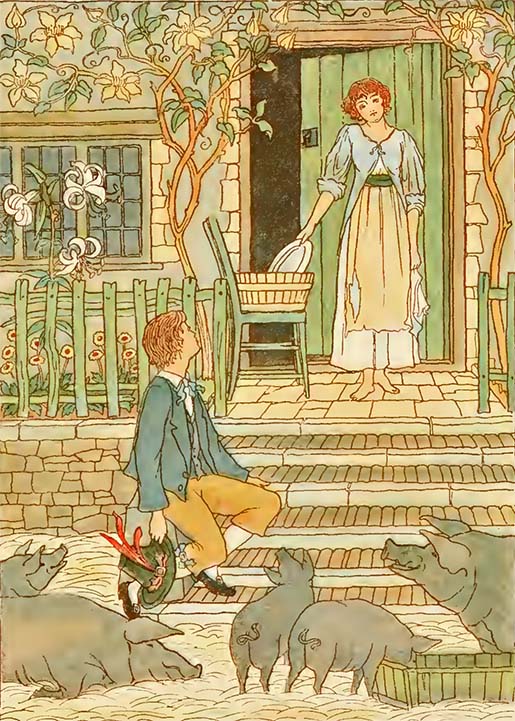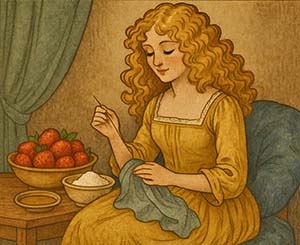Curly Locks
Curly locks ! curly locks! wilt thou be mine ?
Thou shalt not wash dishes nor yet feed the swine
But sit on a cushion, and sew a fine seam,
And feast upon strawberries, sugar, and cream.

Origin
The nursery rhyme Curly Locks was first printed in James Orchard Halliwell’s The Nursery Rhymes of England in the mid-19th century, and it appeared again in Andrew Lang’s Nursery Rhyme Book (1897), with an illustration by L. Leslie Brooke. Its gentle tone sets it apart from many of the rougher street rhymes.
Meaning
Unlike the nonsense jingles so common in the nursery, Curly Locks reads like a simple love lyric. The promise is clear: a girl with curly hair will be spared menial chores like washing dishes or feeding pigs, and instead enjoy a softer life—sewing dainty seams and feasting on strawberries with cream. It reflects the Victorian ideal of domestic gentility, where comfort and refinement were seen as the rewards of a “proper” household.

Curly Locks is often treated less as a playground chant and more as a nursery song or lullaby. The rhyme’s steady rhythm and tender imagery suggest it may have originated as a courting ballad fragment that drifted into children’s collections. It also shows how nursery rhymes sometimes carried adult values into the nursery: here, the fantasy of feminine leisure, comfort, and a genteel role in the home.